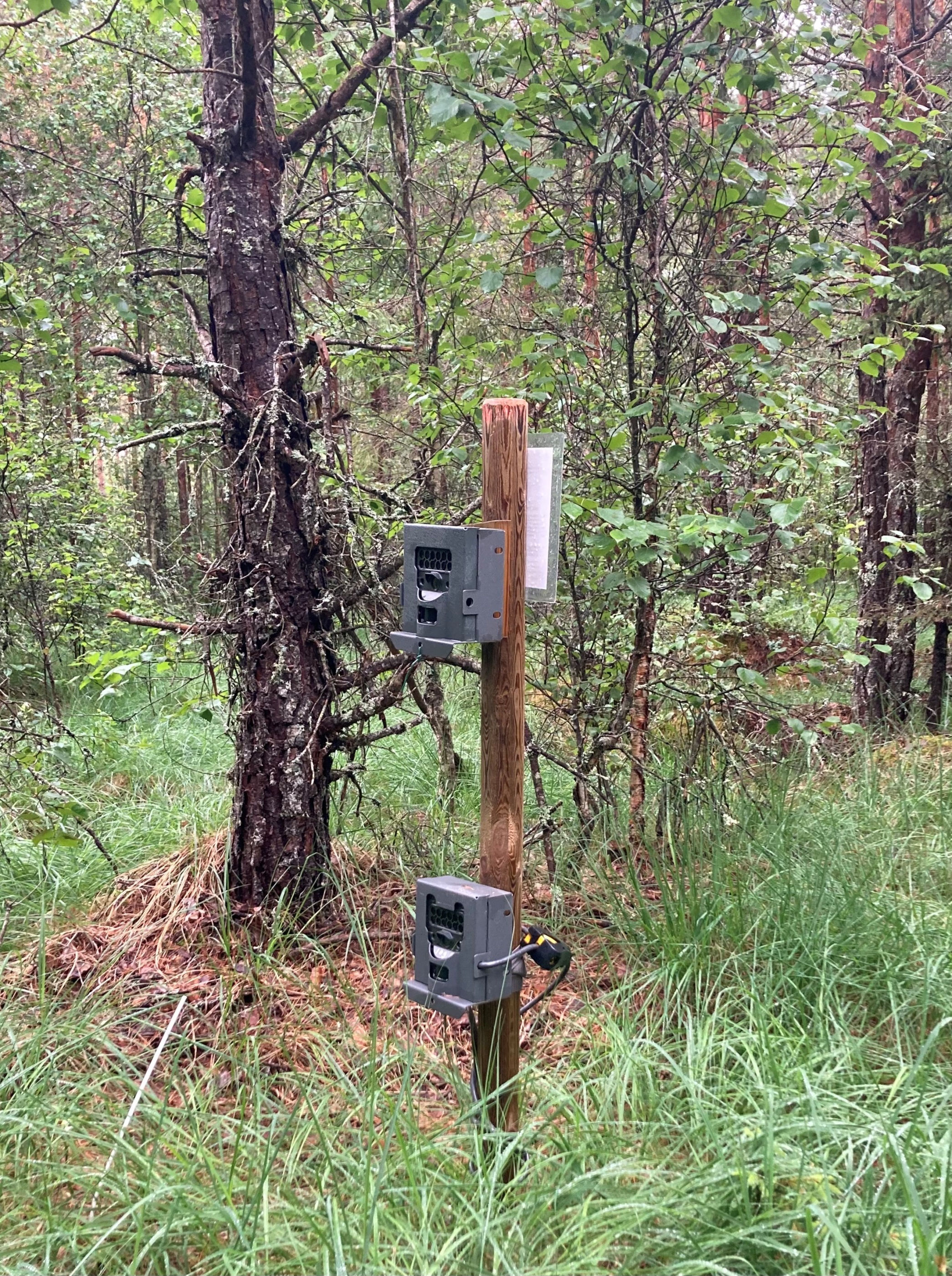Wildlife cameras have received a lot of attention in the last decade, and many research projects and practical applications using camera traps are now running. Cameras are surrounded by high hopes that these methods will make various wildlife surveys more effective, for example, since they may replace some time consuming field work. A scientifically proper use of camera trap data may, however, be tricky, and the topic constitutes a research field in itself. Studied issues may, for example, concern which sampling design (distribution of cameras, set up at each plot etc.) to apply and which picture statistics are actually relevant for a given research question.

Some of these questions are now studied at Grimsö in a joint SITES and FoMA project. The project uses data from the SITES camera survey (32 cameras in a regular grid in the research area) in combination with another type of camera set up at the same plot. The study focuses on the importance of camera position and will try to quantify the differences (number of photos, which species appear, etc.) resulting from varying set ups. The camera trap data will also be used to evaluate an artificial intelligence software for automatic species recognition in pictures via comparisons to interpretations made by experienced wildlife ecologists. The automatic process is usually fast, but its precision is still being discussed.
SITES offers good possibilities for various method evaluation studies as well as for projects searching for biological data, since numerous datasets are freely available. For onsite studies or experiments at Grimsö, via SITES, external projects may also receive support with fieldwork, checking equipment, etc.